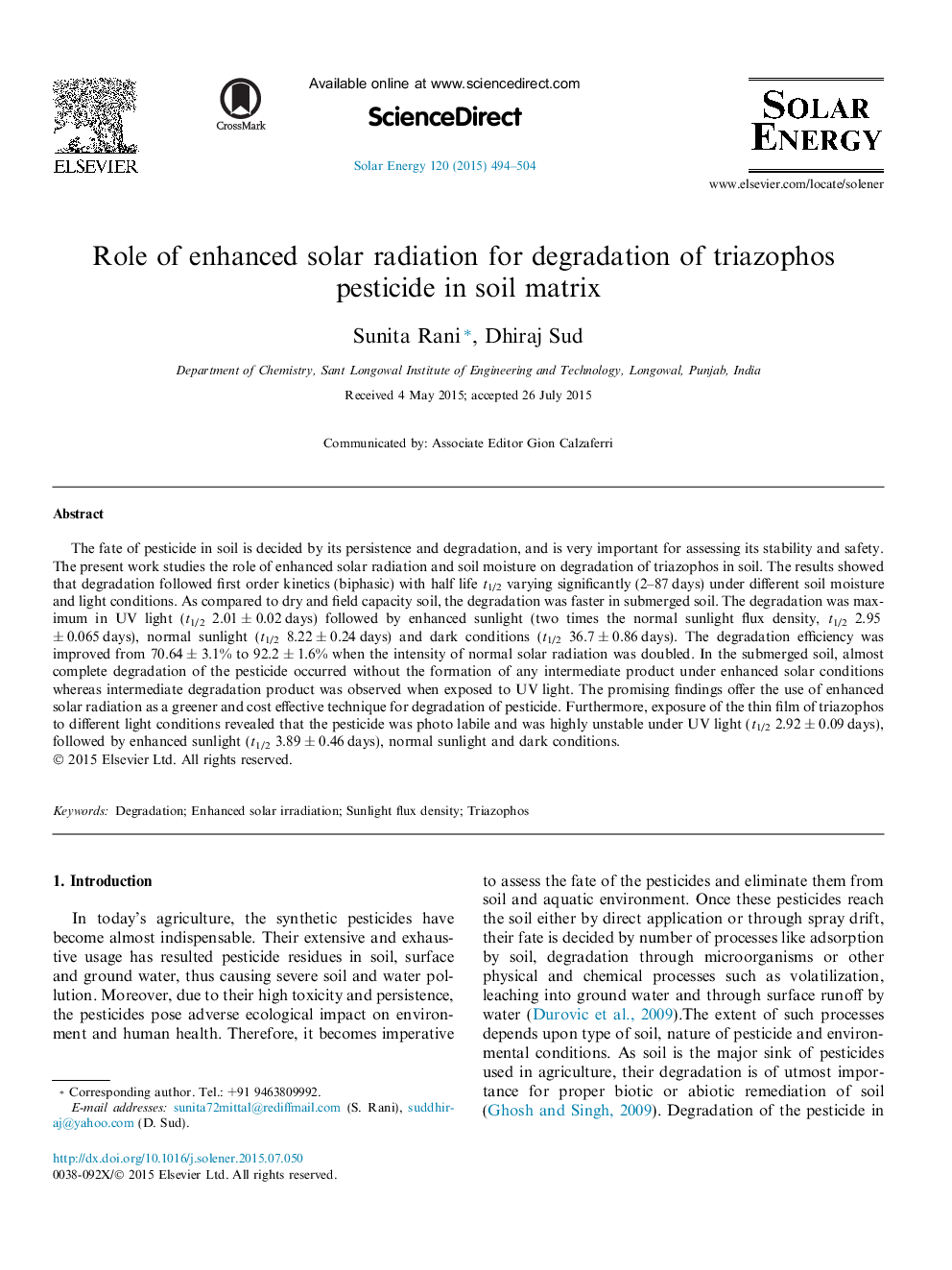| Article ID | Journal | Published Year | Pages | File Type |
|---|---|---|---|---|
| 7937467 | Solar Energy | 2015 | 11 Pages |
Abstract
The fate of pesticide in soil is decided by its persistence and degradation, and is very important for assessing its stability and safety. The present work studies the role of enhanced solar radiation and soil moisture on degradation of triazophos in soil. The results showed that degradation followed first order kinetics (biphasic) with half life t1/2 varying significantly (2-87 days) under different soil moisture and light conditions. As compared to dry and field capacity soil, the degradation was faster in submerged soil. The degradation was maximum in UV light (t1/2 2.01 ± 0.02 days) followed by enhanced sunlight (two times the normal sunlight flux density, t1/2 2.95 ± 0.065 days), normal sunlight (t1/2 8.22 ± 0.24 days) and dark conditions (t1/2 36.7 ± 0.86 days). The degradation efficiency was improved from 70.64 ± 3.1% to 92.2 ± 1.6% when the intensity of normal solar radiation was doubled. In the submerged soil, almost complete degradation of the pesticide occurred without the formation of any intermediate product under enhanced solar conditions whereas intermediate degradation product was observed when exposed to UV light. The promising findings offer the use of enhanced solar radiation as a greener and cost effective technique for degradation of pesticide. Furthermore, exposure of the thin film of triazophos to different light conditions revealed that the pesticide was photo labile and was highly unstable under UV light (t1/2 2.92 ± 0.09 days), followed by enhanced sunlight (t1/2 3.89 ± 0.46 days), normal sunlight and dark conditions.
Keywords
Related Topics
Physical Sciences and Engineering
Energy
Renewable Energy, Sustainability and the Environment
Authors
Sunita Rani, Dhiraj Sud,
